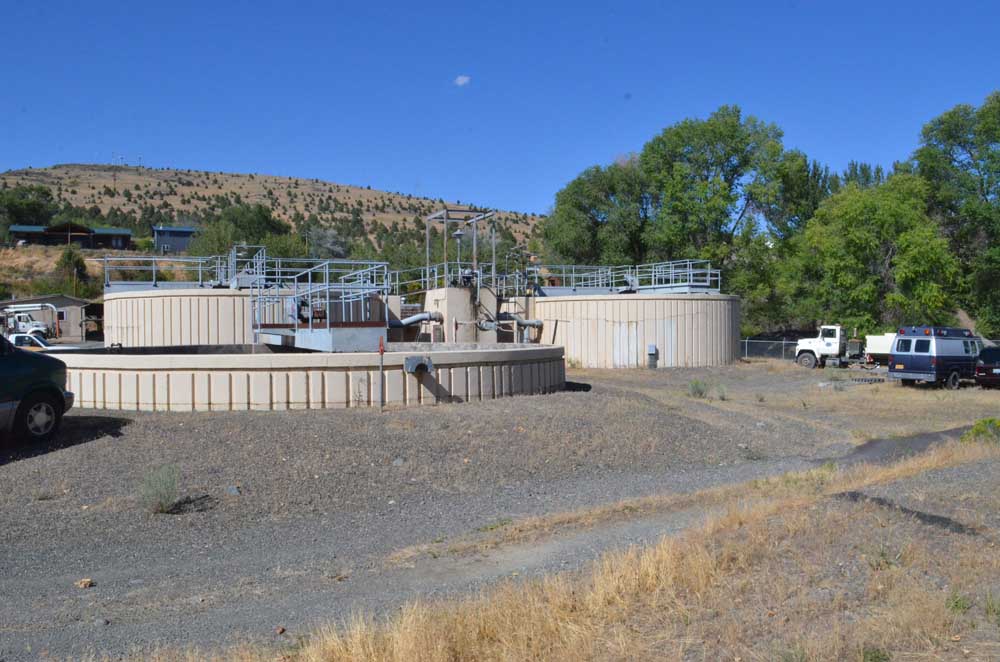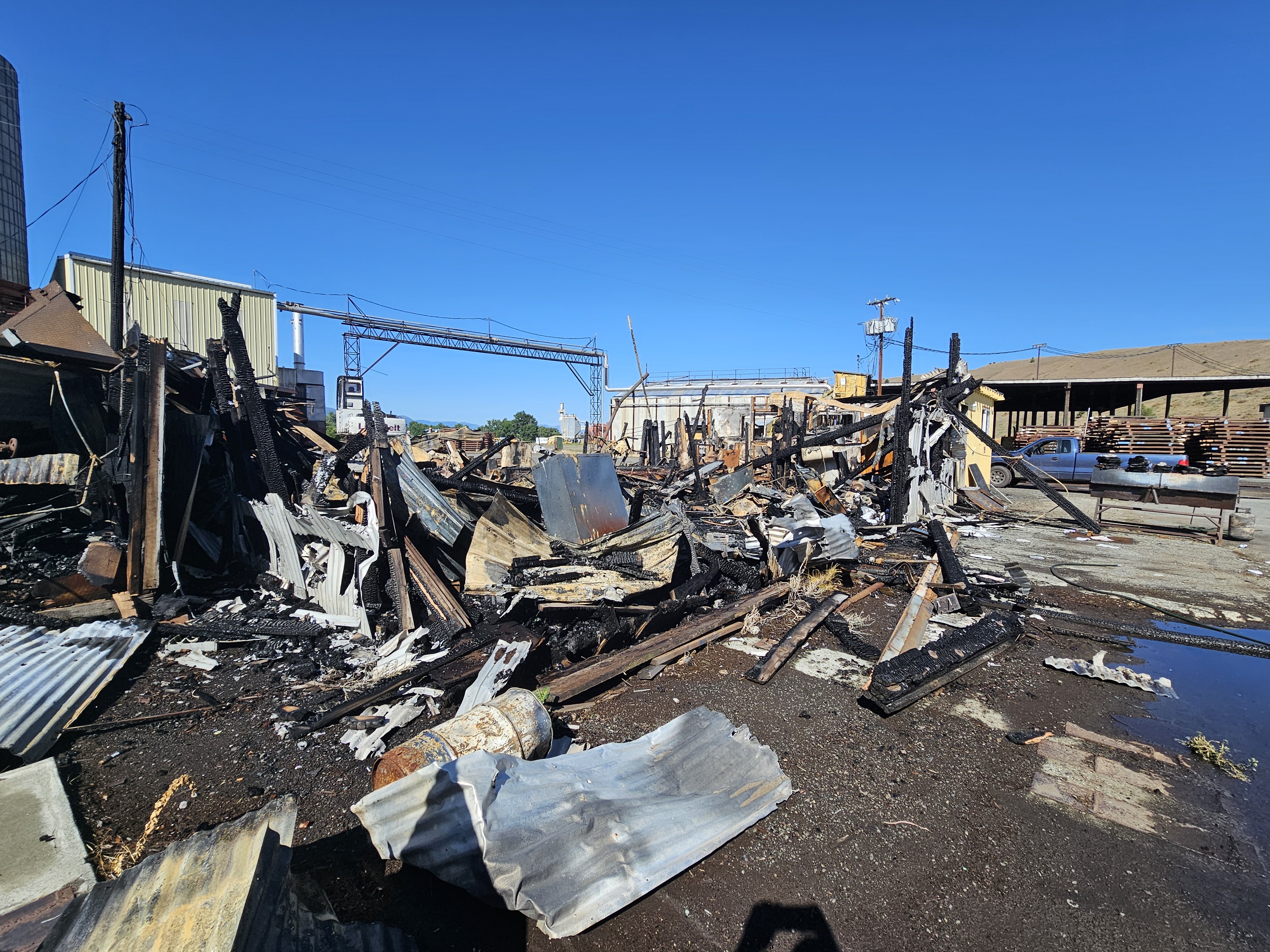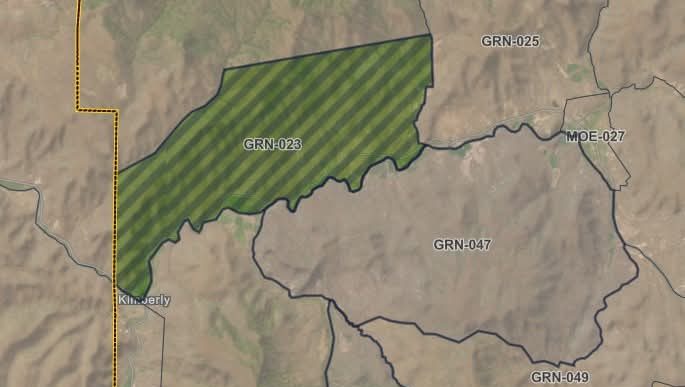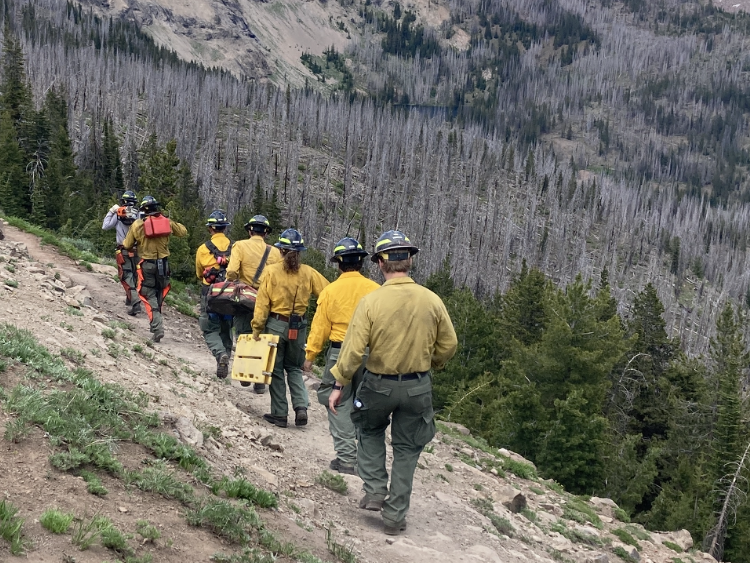John Day Fossil Beds National Monument
Published 5:00 pm Thursday, May 4, 2006
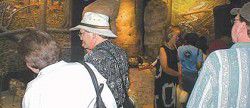
- <I>File Photo</I><BR>The thomas Condon Paleontology Center bring in many visitors to see the fossils and murals in the new exhibit that opened in 2005.
It’s sometimes called the “John Day Tiger,” but it was more like a muscular bear than a modern mountain lion when it roamed the area 30 million years ago, looking for something to eat.
Trending
It’s head was a foot long, and it had a huge, muscular jaw and a long pair of upper teeth protruding down, sharp and deadly.
Here, kitty, kitty.
The big cat – “pogonodon platycopis,” to scientists – was just one of the savage predators that competed for dinner when what is now Eastern Oregon was a lush, subtropical forest.
Trending
There were huge, ungainly beasts such as brontotheres and amynodonts, which fed on plants, and there were other predators, such as hyaenadonts and patriofelis, a particularly rugged beast, that ate the vegetarians.
These creatures have no modern descendants, but scientists know they were here because evidence of their existence was preserved in the sedimentary rock of the John Day River Valley.
The John Day Fossil Beds National Monument, about 40 miles west of John Day, near Kimberly, stretches through 14,000 acres that contain the richest cache of fossils in the world.
No brag, just fact.
“If you work on fossil mammals, this is a very important place, because no matter where you work, you’re going to want to correlate the findings with what we’re working on here,” said Scott Foss, who’s been curator of the John Day Fossil Beds for the past six years.
Not just mammals, but flora, too, which is science-speak for plants.
“This is a great place for a paleobotanist,” said Regan Dunn, a paleobotanist, who’s been at the Monument for close to three years, landing a dream job for a young scientist just out of the University of Wyoming. “It’s a great place for paleontology in general.”
Three palentologists and two lab technicians work full time at the John Day Fossil Beds, a pretty good number for the National Park Service, which has about a dozen palentologists nationwide.
“There is a lot of work going on here,” said John Fiedor, the chief of visitor services at the new Thomas Condon Paleontology Center, the headquarters of the monument, and where visitors to the park are welcomed in a spacious, modern facility that showcases the work being done.
On one side of the visitor center is a window through which scientists can be seen as they prepare fossils for display and research.
About a dozen visiting scientists and their crews come to work the fields annually.
What makes the John Day Fossil Beds such an attraction is that it contains an almost continous record that spans 45 million years, a remarkable continuity that reveals much about the diverse plant and animal life that once thrived here.
Even a palentologist would have a difficult time finding another fossil bed with that kind of continuity.
There are other National Parks that have small portions of all that John Day covers, but none even approaches John Day’s diversity or time span.
“A place like Badlands National Park, for instance, which covers a similar but smaller time period, has far and away more fossils, but their diversity is nowhere near what it is here. We’ve got hundreds of different species here, and they’ve got dozens,” Foss said.
When scientists at other fossil beds around the world find a certain plant or animal, but they don’t have any ashes they can use to date the find, they check with John Day to see where it fits in the grand scheme.
“Other localities, around the world, actually, are using the John Day Fossil Beds as a yardstick,” Foss said.
The diversity is a result of the John Day Basin’s geography. The area had the plains, the water and the mountains that attracted a variety of creatures and plants and allowed them to thrive.
Most other fossil beds have only one type of geography; so the kind of animals and their numbers are limited.
There’s also lots of ash in John Day’s rocks, from the area’s volcanoes, and the mineral-rich ash is an excellent preservative, Dunn said.
The way the basin was shaped by the rock and mountains made it an excellent depository of sediments that flowed along with the river, and then starting about 5 million years ago, the river scoured it all out and instead of depositing new stuff, it started eroding the rock and revealing all that puts a sparkle in the eyes of a paleontologist.
“All the spots in the John Day Fossil Beds are along waterways, where erosion has occurred,” Dunn said.
That erosion has yielded a trove of 22,000 specimens, from which 2,100 species have been identified, and the search for new finds is constant.
Inside the center is a walk-through museum that holds exhibits, text panels and colorful murals that help visitors comprehend the detailed series of rock strata that the fossils are found in.
Six large cases in the lobby are designed to feature changeable exhibits about aspects of the paleontology of the John Day Basin.
Among the first subjects to be featured is the fossilization process, which explains how scientists know how old the rocks and fossils are.
At the center, more than 500 specimens are on display, surrounded by rock work, with backdrops of eight murals and more than 50 sounds – all to help transport the visitor back millions of years.
A special exhibit traces the transformation of the horse over millions of years.
Although there are walking paths in the monument, including the Island in Time interpretive trail, don’t grab a trowel and expect to dig up a dinosaur. No part of the John Day Fossil Beds is open to the public for digging.
“That’s what (the city of) Fossil is for,” Dunn said.
Fossil is in Wheeler County, about 40 miles north of the monument’s vistor center. Located behind Wheeler High School, the city’s Public Digging Beds provide an opportunity for civilians to dig for fossils.
Ted Fremd, the chief paleontologist for the John Day Fossil Beds National Monument, contributed to this article.


